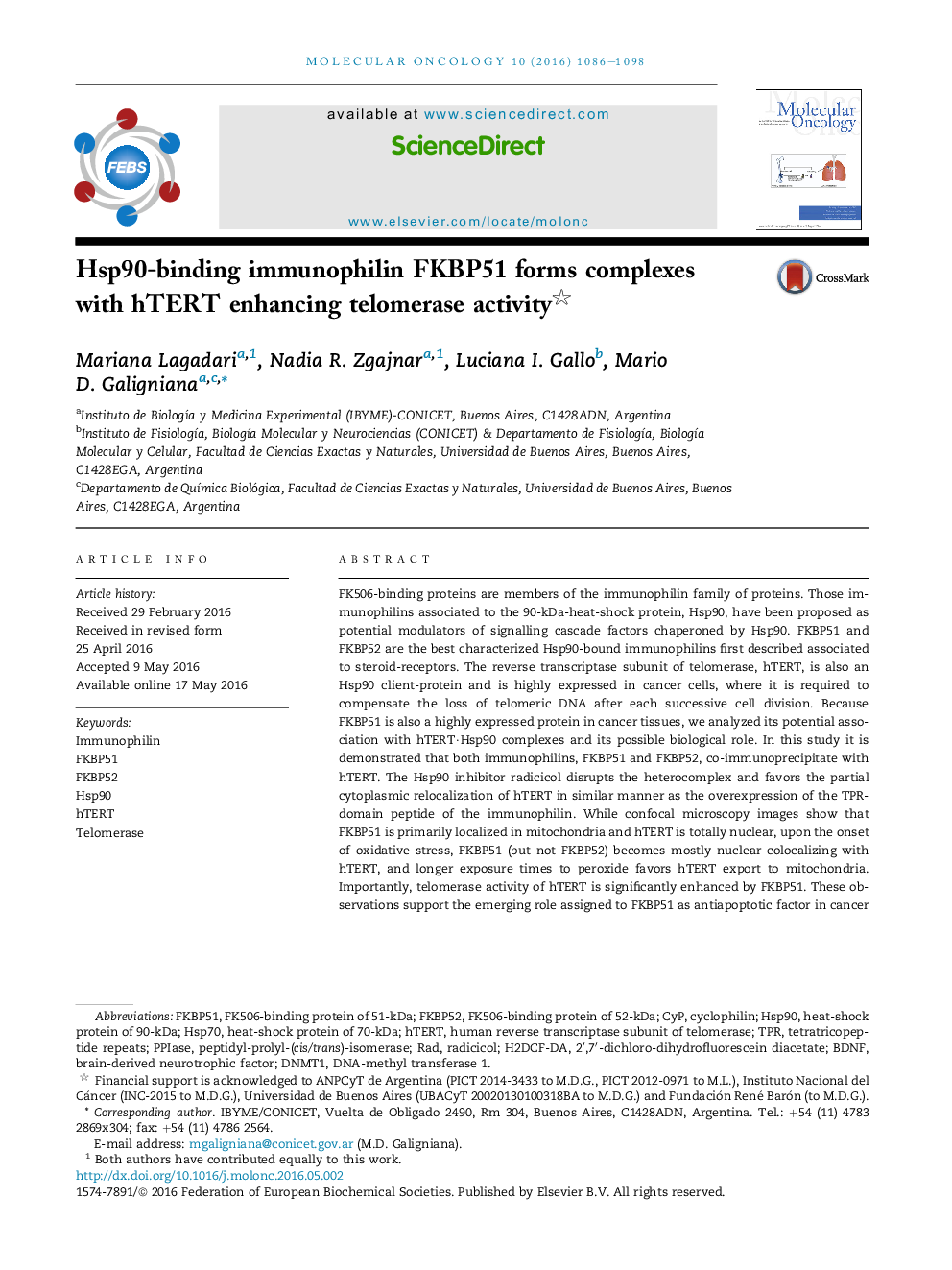| Article ID | Journal | Published Year | Pages | File Type |
|---|---|---|---|---|
| 5528606 | Molecular Oncology | 2016 | 13 Pages |
â¢Mitochondrial FKBP51 translocates to the nucleus and colocalizes with hTERT.â¢FKBP51 is a novel member of the Hsp90-based heterocomplex associated to hTERT.â¢Telomerase activity is enhanced by FKBP51.â¢FKBP52 is also a component of the hTERT-Hsp90 able to favor telomerase activity.
FK506-binding proteins are members of the immunophilin family of proteins. Those immunophilins associated to the 90-kDa-heat-shock protein, Hsp90, have been proposed as potential modulators of signalling cascade factors chaperoned by Hsp90. FKBP51 and FKBP52 are the best characterized Hsp90-bound immunophilins first described associated to steroid-receptors. The reverse transcriptase subunit of telomerase, hTERT, is also an Hsp90 client-protein and is highly expressed in cancer cells, where it is required to compensate the loss of telomeric DNA after each successive cell division. Because FKBP51 is also a highly expressed protein in cancer tissues, we analyzed its potential association with hTERT·Hsp90 complexes and its possible biological role. In this study it is demonstrated that both immunophilins, FKBP51 and FKBP52, co-immunoprecipitate with hTERT. The Hsp90 inhibitor radicicol disrupts the heterocomplex and favors the partial cytoplasmic relocalization of hTERT in similar manner as the overexpression of the TPR-domain peptide of the immunophilin. While confocal microscopy images show that FKBP51 is primarily localized in mitochondria and hTERT is totally nuclear, upon the onset of oxidative stress, FKBP51 (but not FKBP52) becomes mostly nuclear colocalizing with hTERT, and longer exposure times to peroxide favors hTERT export to mitochondria. Importantly, telomerase activity of hTERT is significantly enhanced by FKBP51. These observations support the emerging role assigned to FKBP51 as antiapoptotic factor in cancer development and progression, and describe for the first time the potential role of this immunophilin favoring the clonal expansion by enhancing telomerase activity.
Graphical abstractDownload high-res image (241KB)Download full-size image
